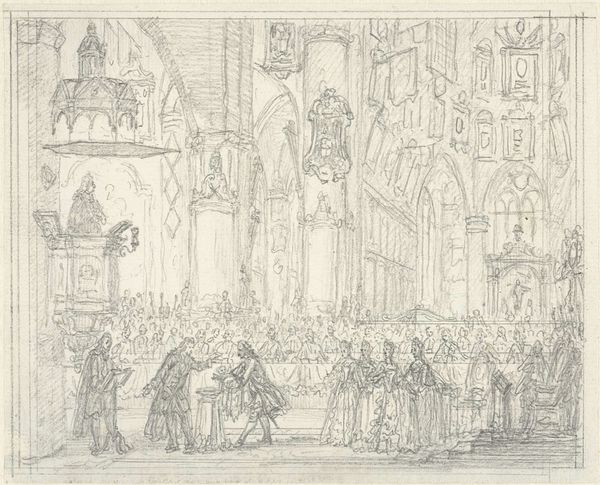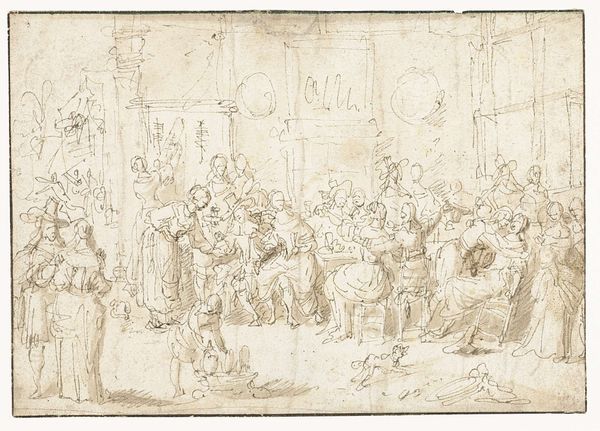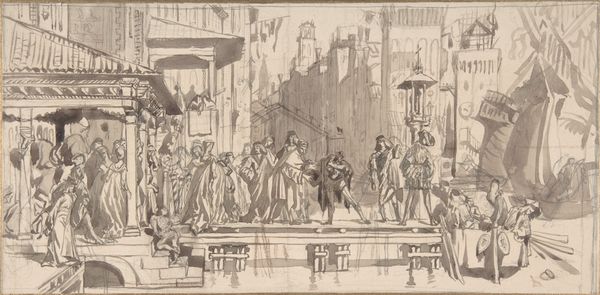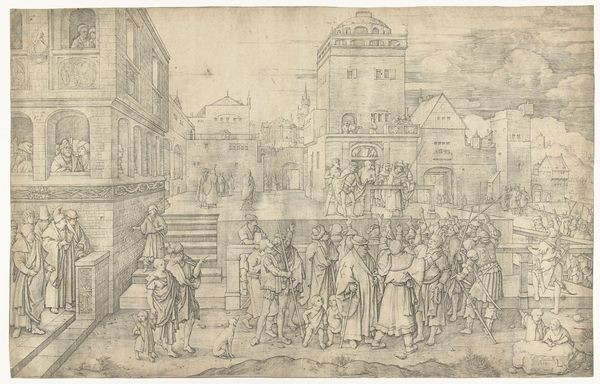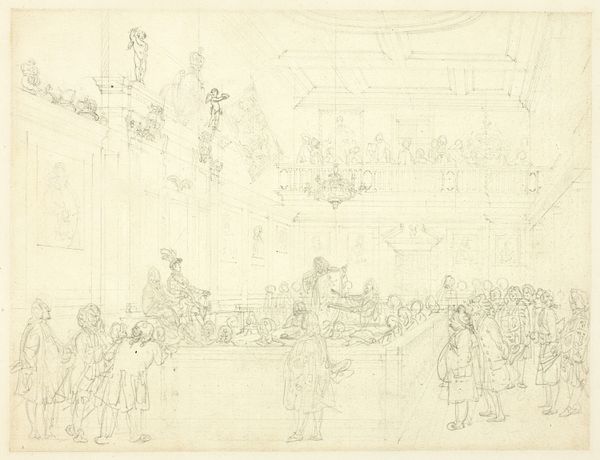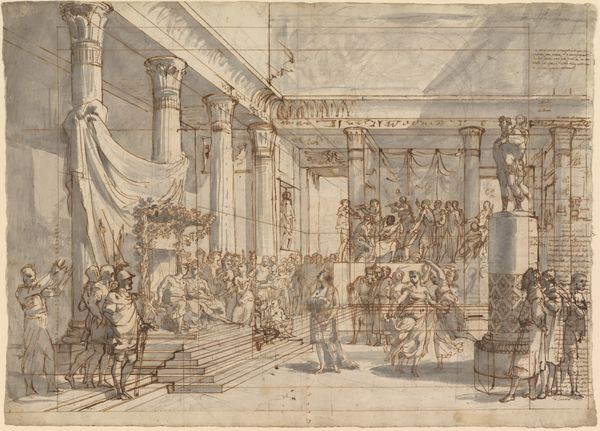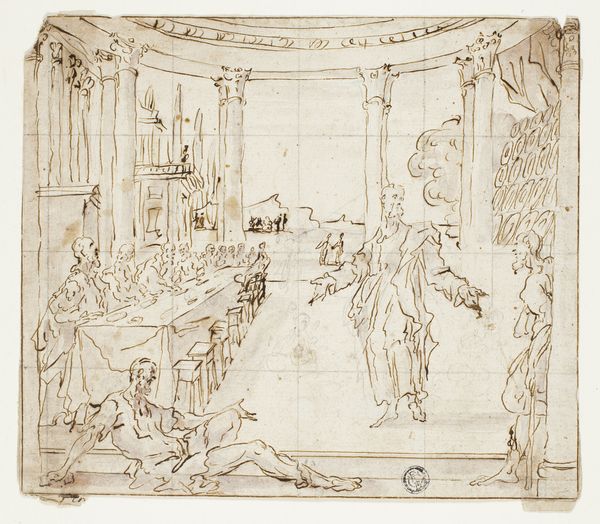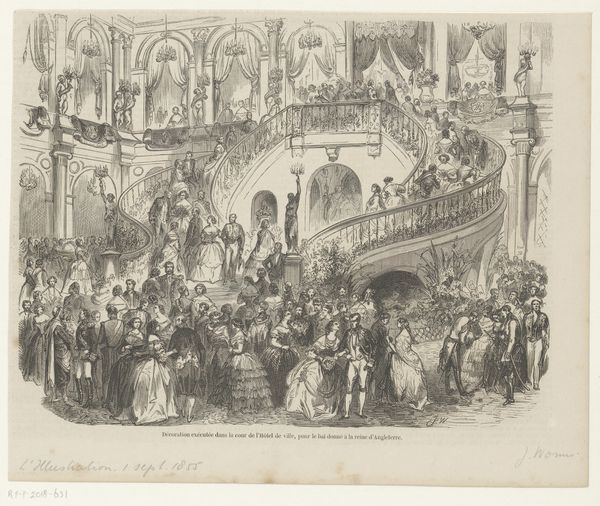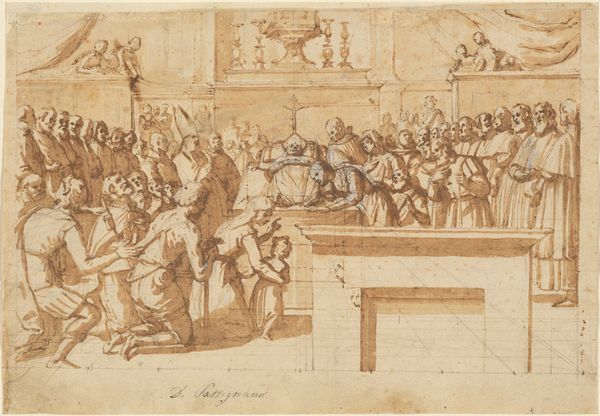
drawing, etching, paper, ink
drawing
narrative-art
baroque
etching
etching
paper
ink
genre-painting
Dimensions: height 179 mm, width 261 mm
Copyright: Rijks Museum: Open Domain
Editor: Here we have Simon Fokke's etching in ink on paper titled *Doop van prins Willem V, 1748*, created in 1748. It depicts a scene of what looks like a royal baptism in a large hall, maybe a church. It's fascinating how Fokke captures such a grand event with just lines. What strikes you about this piece? Curator: Well, the first thing that jumps out at me is the deliberate construction of power and performance. Consider the baptism not merely as a religious ceremony, but as a carefully staged display of dynastic legitimacy. The very architecture—those arches, the elevated seating—emphasizes hierarchy and the gaze of the privileged upon this child, Willem V. This performance tells us about 18th-century ideas of gender, the role of family in the social order, and who is welcome - or excluded. Editor: So you're seeing the architectural space as almost a theater for this event, and the participants are both audience and performers in this political play? Curator: Precisely! Think about the symbolism inherent in naming and lineage. What does it mean for Willem V to be christened with such pomp in 1748? Is this purely a personal religious act or also a symbolic binding to a lineage of power? Consider who is missing as well – which bodies, which voices aren't included in this drawing of power? The under-representation or exclusion of certain demographics is a crucial element in analysing any historical depiction of hierarchy. Editor: It’s interesting to consider the piece not just for what’s depicted, but for what’s intentionally left out, or perhaps not even considered significant enough to include. It’s a different way of engaging with it. Curator: Absolutely. Analyzing art through a critical lens, interrogating its assumptions about identity and power, allows us to have a richer, more meaningful engagement. Editor: I will definitely consider the missing perspectives from now on, it helps challenge initial assumptions and opens doors to deeper insight. Thank you for this!
Comments
No comments
Be the first to comment and join the conversation on the ultimate creative platform.
